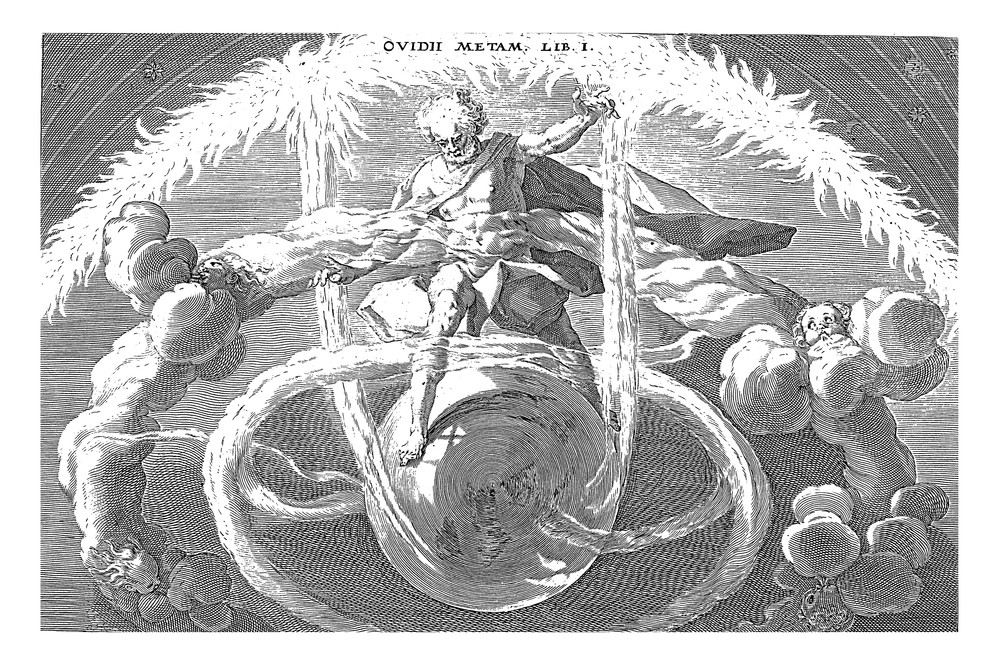
Throughout history, civilizations have worshipped deities that have embodied a plethora of concepts. From natural phenomena like lightning to man-made ideas like war, gods often represent important aspects of existence. For the most part, these mythological figures have stood for order in some way. However, many ancient stories from around the world also included gods with a penchant for chaos. Usually described as being from forgotten times before the universe even came to be, these gods of chaos played pivotal parts in early stories from all over the world.
Greco-Roman Gods of Chaos
According to the mythologies of both Greek and Roman civilizations, Chaos was the god who existed before all others. The poet Hesiod described Chaos as the “first thing that came into being.” Everything else, from the planet to the stars to the other gods and mortal creatures, all sprang forth from chaos. Due to this, many ancient philosophers believed that Chaos was the truth at the center of everything. Though in a category all by itself, Chaos was far from the only chaotic deity found in these pantheons.
Another agent of chaos included Eris, who was the goddess of strife and discord. Beyond this, it was believed that the multi-headed Hydra and the serpent Typhon were representative of true chaos.
Arabian Chaos
Many Westerners are familiar with the concept of the genie. Also known as djinn, these creatures were said to roam the world before humans came around and act on behalf of chaos and evil. What people from the West don’t often realize, however, is that the djinn were only one of several species said to have lived on the planet. Others include the hinn and the binn. Though less is known about these than the djinn, certain followers of Islam recognize that the hinn and binn are long extinct. The djinn, on the other hand, still hide in plain sight.
Evil Chaos
Chaos is usually represented as neither good nor bad. Like order, chaos merely is an inevitability. However, the nature of chaos has led many civilizations to conflate it with evil. In ancient Persia, Zoroastrian beliefs stated that Angra Mainyu was the god of evil. This god existed in contrast and opposition to Ahura Mazda, who was heeded as the god of good. However, this is far from the only example of chaos being confused with an evil force. According to Guaraní mythology, the spirit Tau is one meant to exhibit traits of chaos and evil simultaneously.
Primordial Gods of Chaos
Writings from Mesopotamia tell of a very ancient goddess called Tiamat. Unlike other chaos gods, Tiamat did not exclusively symbolize chaos as an absence of order. Though this was part of her story, Tiamat also represented the ocean. In this, she was said to have both given life to the world and unleashed all of the horrors found across it.
Serpentine Chaos
Finally, it is important to note that many ancient cultures refer to a great serpent that circles the world. Sometimes depicted as a snake with its tail in its mouth, the great serpent is referenced in mythologies ranging from the Norse to the Aztecs to the peoples of Western Asia. Though the stories vary, the general concept is that this serpent is sleeping and, when it wakes, it will drop its tail from its mouth. This will usher in a time of total chaos and effectively end the universe.
From giant serpents to primordial darkness, chaos gods have taken plenty of interesting forms over history. While few people have ever worshipped these deities in the traditional sense, honoring the role of chaos is key to understanding order. Though many modern religions reduce the concept of chaos to the evil associated with the devil, it can be interesting to see how it was viewed by people of the past.

